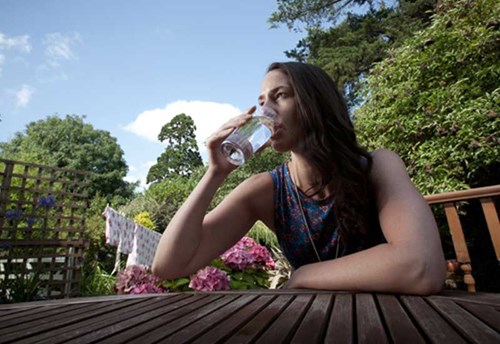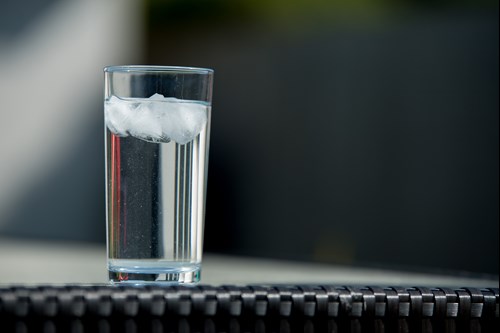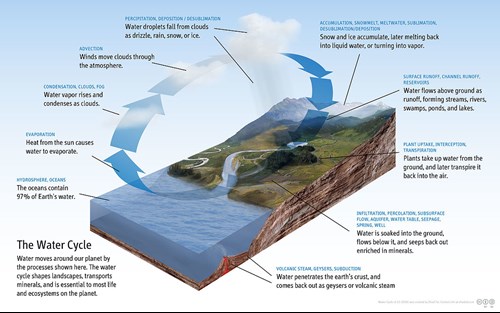We all have a water supplier – yet how many of us really think about the water company we get this service from? And the hundreds of people that have made our water supply possible?
Writes Dr Guy Franklin FRSPH CSci, Head of Water Quality and Compliance.

As long as we turn on our taps and wholesome water comes out – we simply pay our monthly service charge and think little more about this essential life giving substance.
But what goes on behind the scenes to keep it flowing?
Most people are aware that we use the same water today that was on the planet billions of years ago – it just gets recycled.


One of the earliest things we learn at school is that each glass of water you drink has been drunk by multiple beings beforehand – some figures say it’s been through four other people before you and some say as many as 12, whatever the figure it’s still pretty impressive – and the thought that you are probably drinking dinosaur pee is mind blowing!
How is this the case?
Water covers three quarters of the Earth's surface yet around 97% is salt water and 2% is frozen – leaving only 1% available as fresh water. Nature recycles this 1% through the water cycle:
- water evaporates from seas (leaving the salt behind)
- fresh water evaporates from rivers and lakes
- trees ‘breathe out’ water vapour through their leaves (transpiration)
- all the water vapour rises into the sky
- as the vapour rises, it cools and condenses to form clouds
- the tiny droplets that form the clouds group together as bigger droplets
- when these bigger droplets get too heavy, they fall back to the earth as rain, snow or hail
- some rainwater feeds plants, trees and animals. Other rainwater soaks into the ground and flows into rivers
- rivers take water back out to sea where the cycle begins again.


But water out in the wild (rivers, lakes, rain water etc.) will contain pollutants that mean it isn’t safe for humans to drink – such as natural plant matter, bacteria, parasites and chemicals.
Where does our drinking water come from?


Rainfall is the primary source for public water supplied in the UK. There are three categories of source water: groundwater, upland water and lowland river water. The level of treatment required to meet quality standards depends on source water quality.
Your water company gathers this water then treats it and delivers it to your tap.
How is water treated to make it ok to drink?
To provide water that's good for you your water company must meet strict drinking water quality standards set by the Water Supply (Water Quality) Regulations.
Water UK is the body which represents all water companies across the UK, and is a great place to start if you want to know more about drinking water, which in the UK is of the highest standard and among the best in the world.
The type of treatment process required depends on the type of raw water source and its quality in a particular area, but to ensure supply is met, continuous and reliable, this process goes on 24 hours a day, 7 days a week – with a huge teams of workers keeping water treatment works running effectively.
And before the water is even taken from source your water company has to monitor the quality of the “raw water” (river, bore hole, reservoir) to make sure they haven’t become grossly contaminated – and then decide which type of treatment to use for a particular source of raw water.
How water gets to your tap?
The water is firstly taken through pipes running from rivers, reservoirs and underground sources to water supply works for cleaning. Then it's either pumped, or flows by gravity, through a vast network of water mains to homes or businesses.


Along its route through the network, the water is stored inside closed tanks called service reservoirs. These reservoirs ensure that there’s always an adequate supply of water available to meet fluctuations in demand. They also provide extra storage if the flow of water is interrupted, which sometimes happens during maintenance work.
The network provides enough pressure to enable us to use our showers, washing machines and dishwashers. In an emergency, if possible, water workers can keep water flowing by redirecting supplies from neighbouring water distribution networks.
All these pipes and storage reservoirs require and army of people to ensure they continue to flow, with the water company also supported by many scientists, engineers and business workers behind the scenes.


So next time you turn on the tap for a glass of water you may be interested to know that asides from previously physically “passing through” an average of four human beings and possible a dinosaur or two – more recently it has “passed through the care” of around 200 human beings; your water company workers.
Read part 2: Keeping the taps flowing as normal throughout Covid-19
